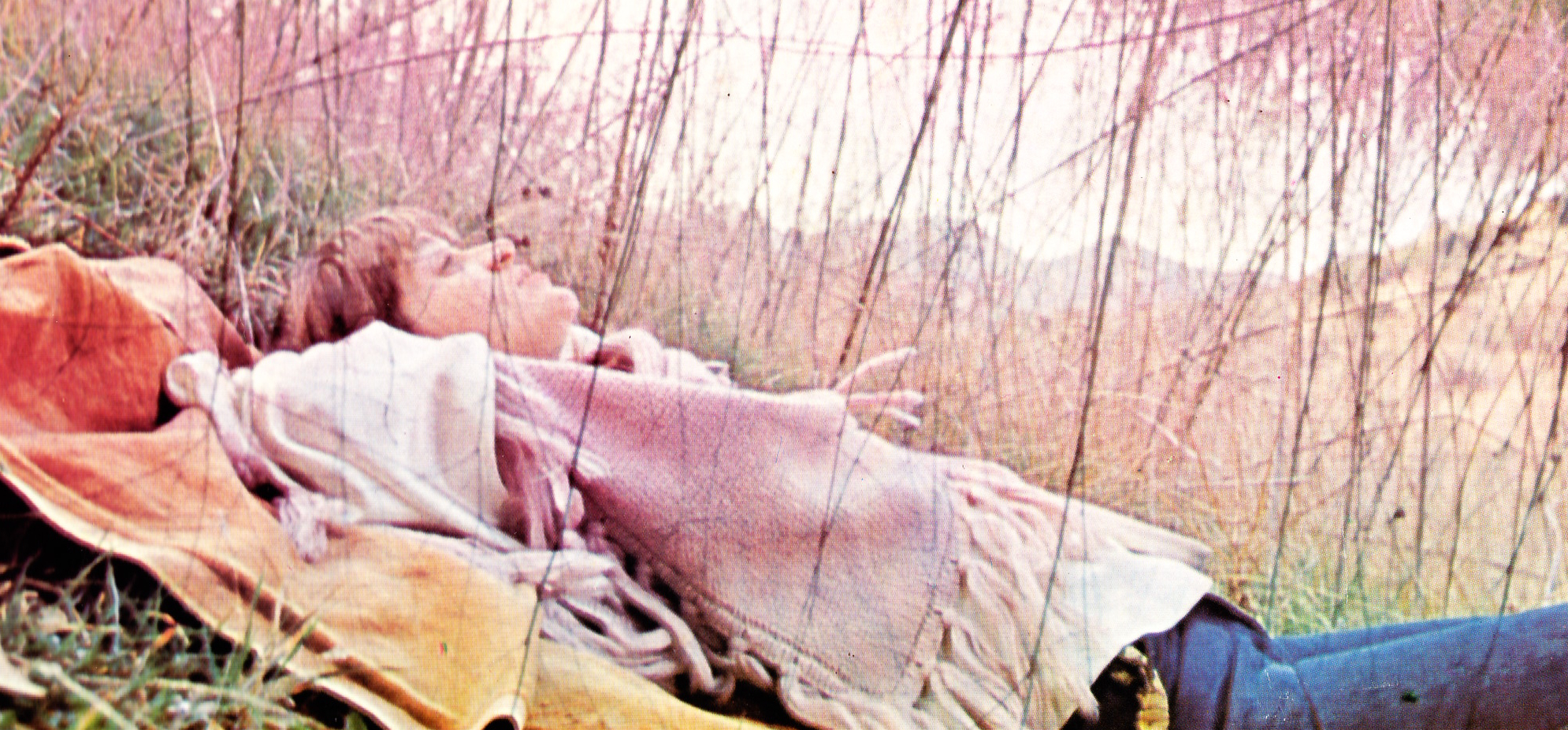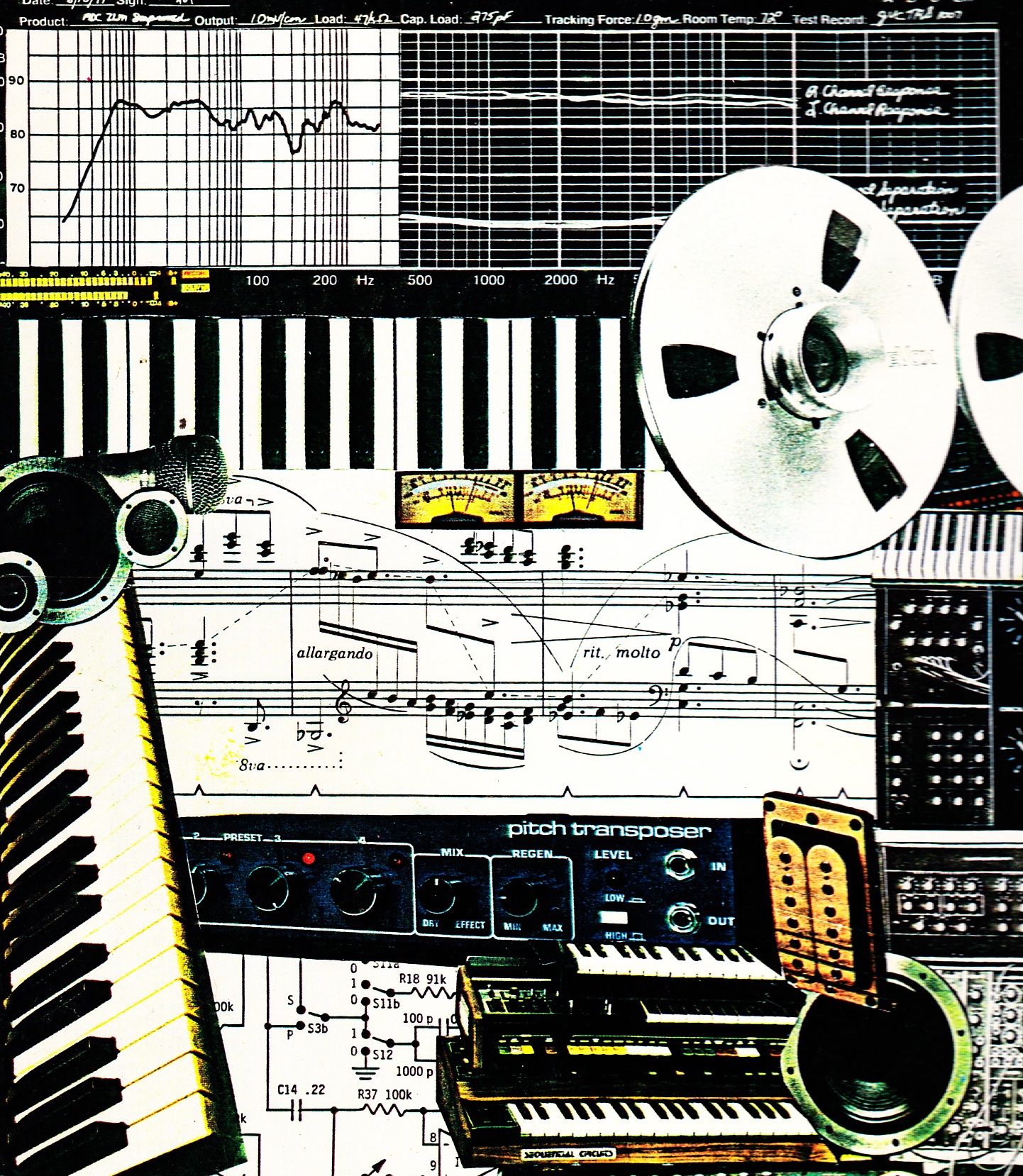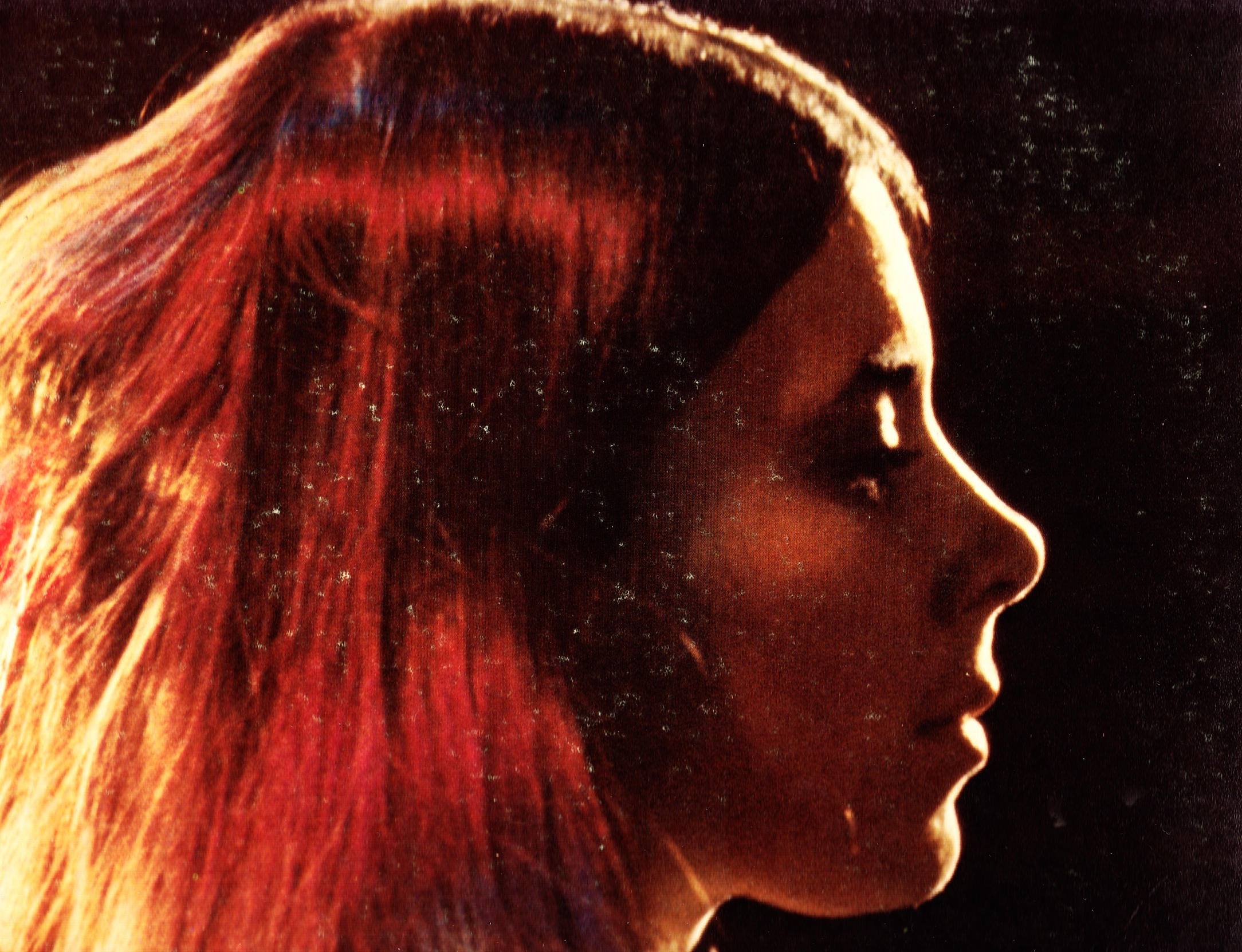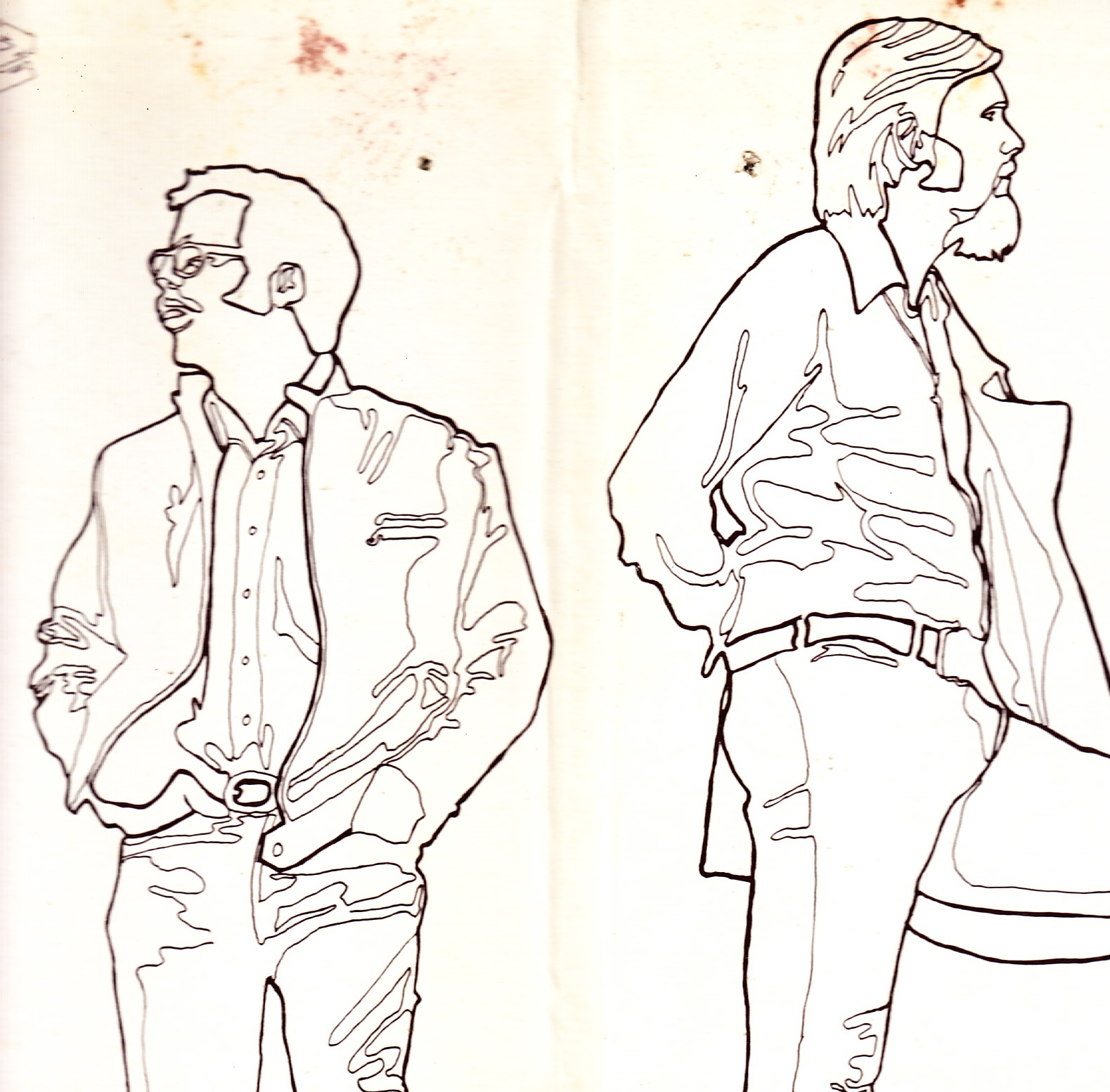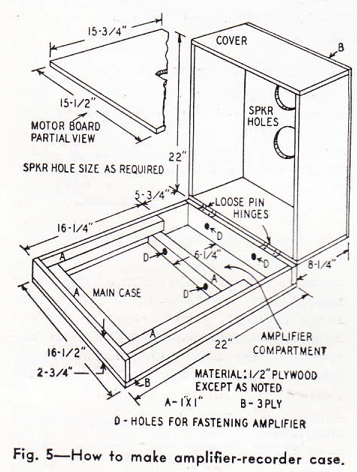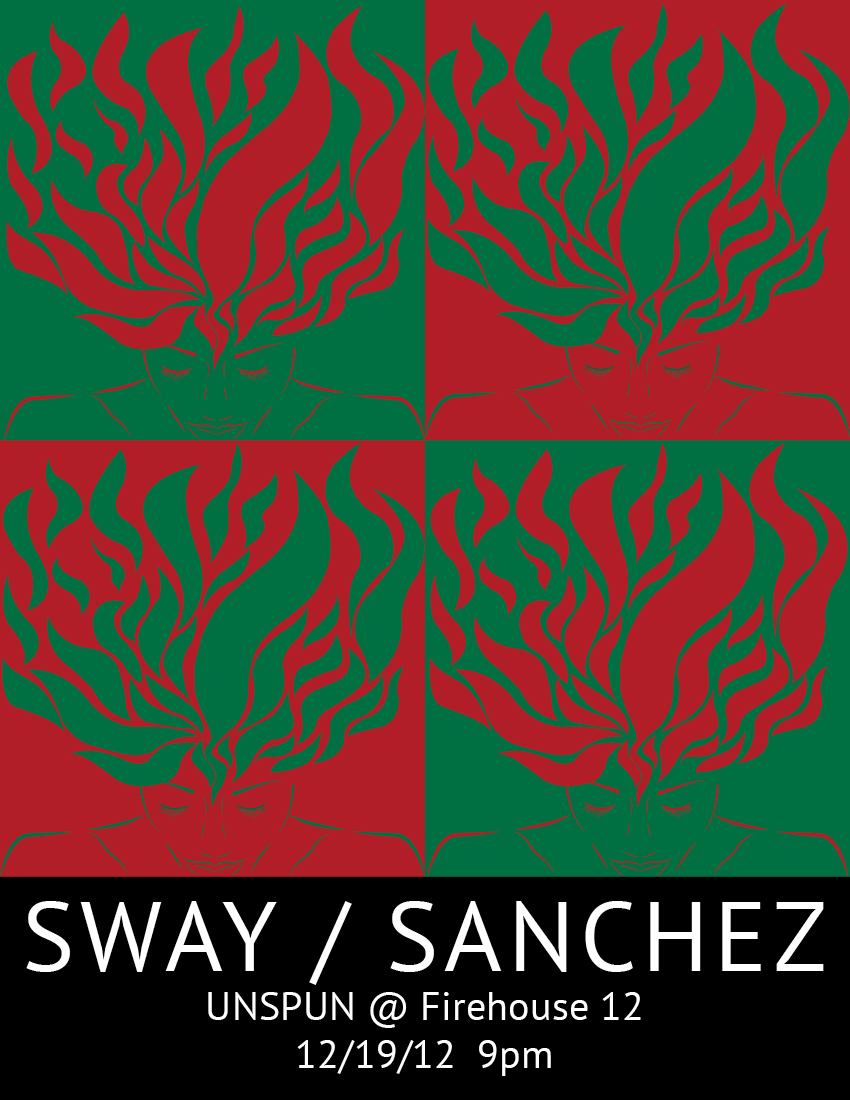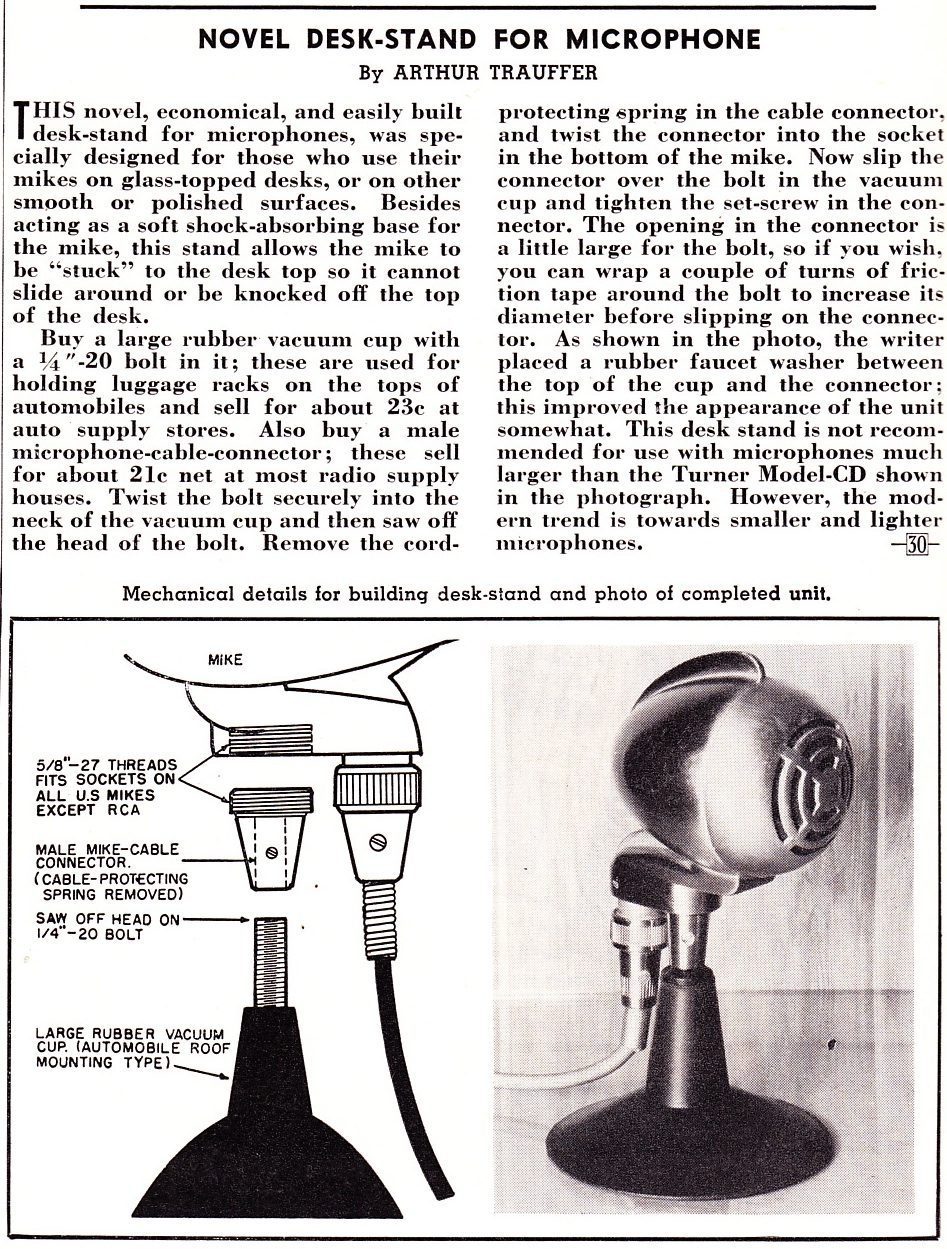 Just in case you’re not quite ready to sell yr extensive microphone collection, Arthur Trauffer offers a novel way of mounting the goddamn things. I had no idea that those old Hi-Z mic jacks fit mic-stand threads; I have accumulated about of million of those useless connectors and now I know what to do with them! (scanned from Radio + Television News, September 1953)
Just in case you’re not quite ready to sell yr extensive microphone collection, Arthur Trauffer offers a novel way of mounting the goddamn things. I had no idea that those old Hi-Z mic jacks fit mic-stand threads; I have accumulated about of million of those useless connectors and now I know what to do with them! (scanned from Radio + Television News, September 1953)
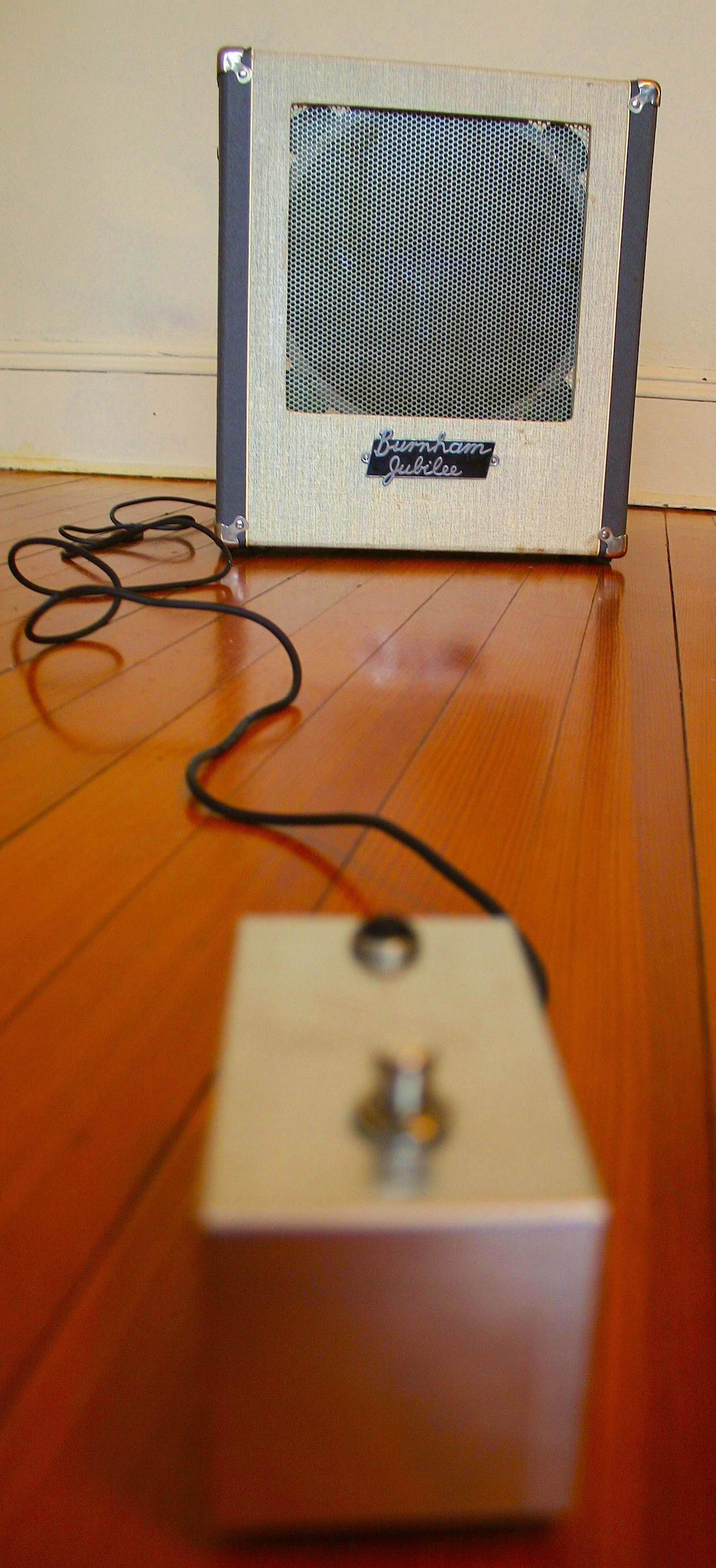 As I mentioned on my Tumblr last year, I used the idle time during our annual Open Studios event to construct yet another Fender Champ-based guitar amplifier. I had purchased a pair of unused circa 1955 suitcase-PA speakers cabinets, along with a Shure Commando mic, as a set on eBay for a few bucks with the intent of turning them into lil combo amps.
As I mentioned on my Tumblr last year, I used the idle time during our annual Open Studios event to construct yet another Fender Champ-based guitar amplifier. I had purchased a pair of unused circa 1955 suitcase-PA speakers cabinets, along with a Shure Commando mic, as a set on eBay for a few bucks with the intent of turning them into lil combo amps.
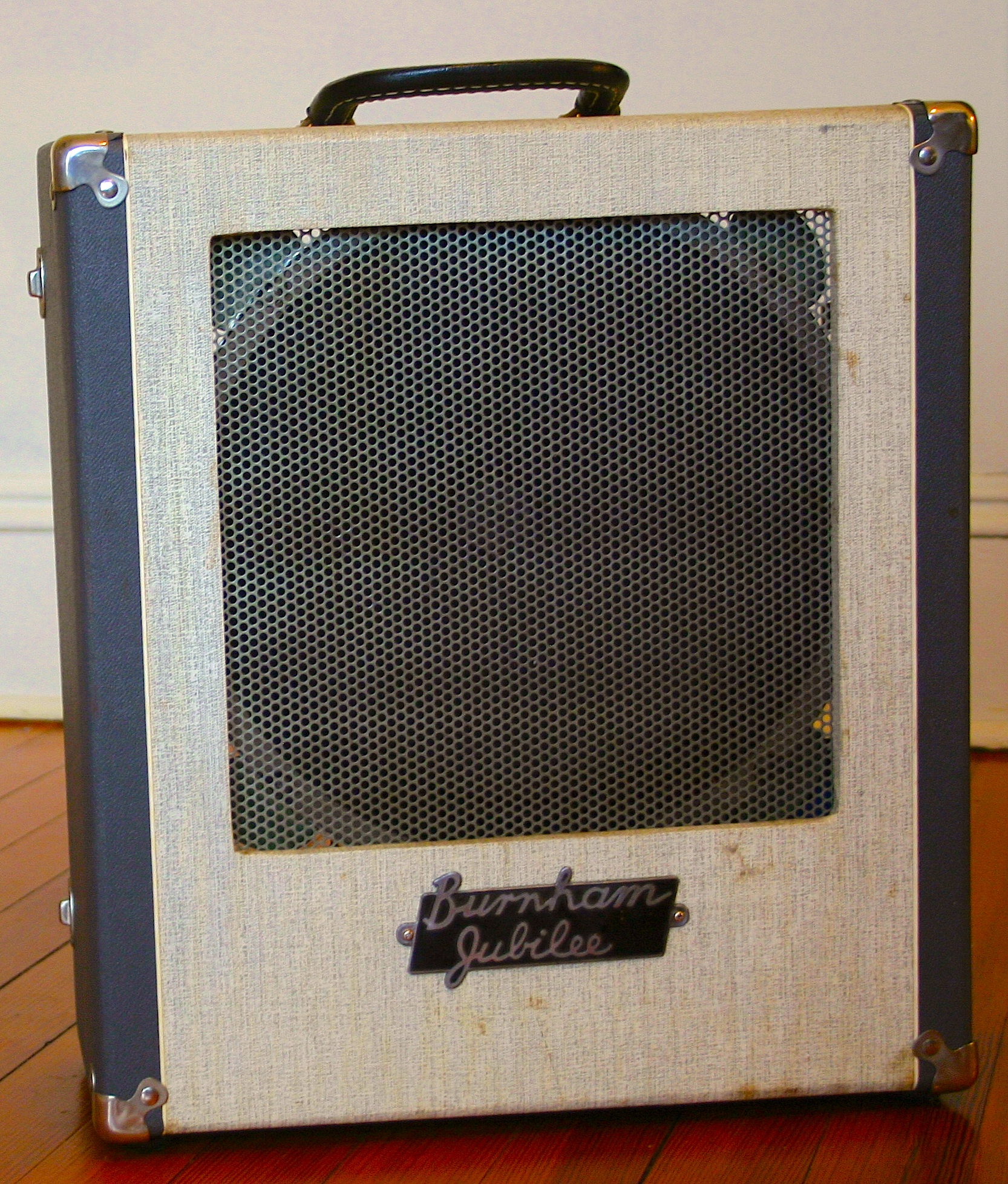 Aside from some odd shopwear/discoloration, the cabs were very solid and the original 12″ drivers sounded good. Based on the interior space available (and the relatively low power handling of the driver) I decided to build a variation on the classic Fender Vibrochamp.
Aside from some odd shopwear/discoloration, the cabs were very solid and the original 12″ drivers sounded good. Based on the interior space available (and the relatively low power handling of the driver) I decided to build a variation on the classic Fender Vibrochamp.
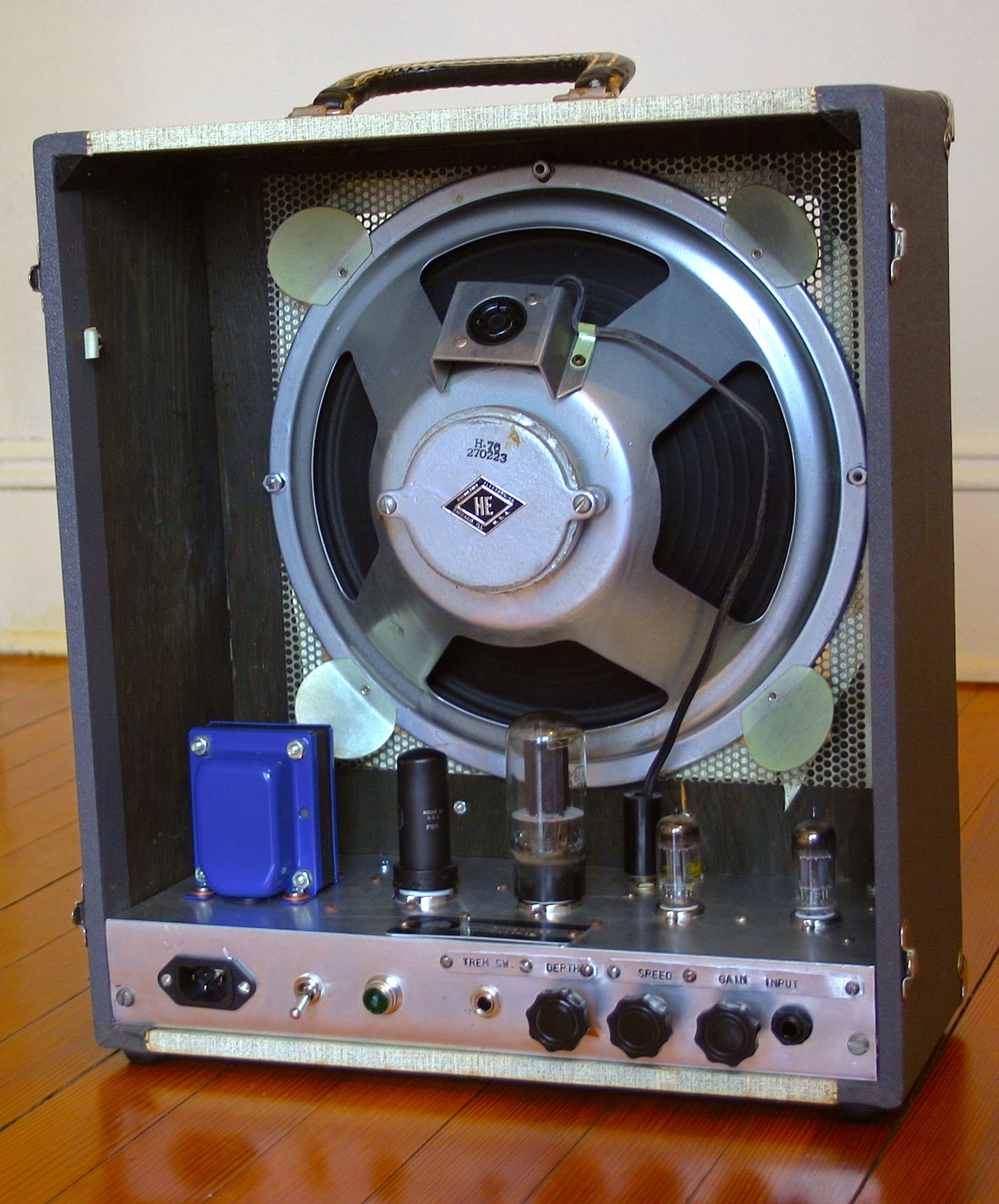 And so was born the King-Vibe. Similar in principle to a vibro-champ, the King Vibe has more power output (approx. 6 watts, courtesy of its 6L6 rather than 6V6 output section) and waaaaaaaaaaay more gain. The additional 20db of gain was achieved by eliminating the tone stack. The aluminum chassis was formed by hand; all wiring is point to point with Sprague and Solen coupling caps. I used a 6X5 rectifier tube, as the Edcor power transformer has only a 6.3V haeater winding. Output transformer is also an Edcor. The speaker is attached via a 1/4″plug at the top of the chassis so that an external cab can be easily connected. IEC mains socket is provided for convenience and a tidy appearance.
And so was born the King-Vibe. Similar in principle to a vibro-champ, the King Vibe has more power output (approx. 6 watts, courtesy of its 6L6 rather than 6V6 output section) and waaaaaaaaaaay more gain. The additional 20db of gain was achieved by eliminating the tone stack. The aluminum chassis was formed by hand; all wiring is point to point with Sprague and Solen coupling caps. I used a 6X5 rectifier tube, as the Edcor power transformer has only a 6.3V haeater winding. Output transformer is also an Edcor. The speaker is attached via a 1/4″plug at the top of the chassis so that an external cab can be easily connected. IEC mains socket is provided for convenience and a tidy appearance.
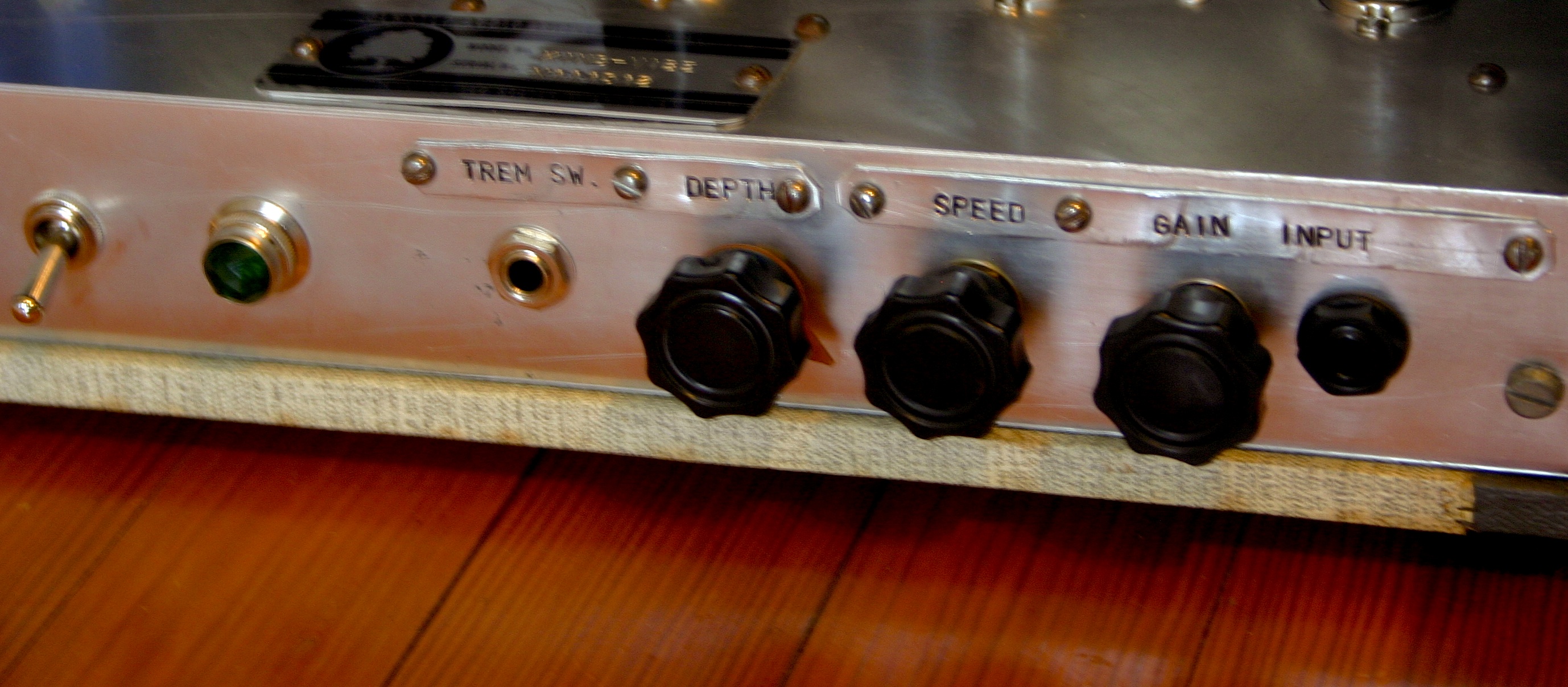 The tremolo is still fully variable and there is a lone Gain control, no bass+treble knobs. Whatever minor inconvenience this presents is more than justified by the insane amounts of distortion and fuzz that this thing is capable of. And like the early Tweed Champs (which have the same topology), it cleans up perfectly by simply backing off of the gtrs volume control. The 6L6 sees a little over 250V on its plate, which is the low end of the ‘textbook’ operating curve of that tube. This allows the amp to break up into smooth power-stage distortion relatively quickly, which is kinda the point of these small amps anyhow.
The tremolo is still fully variable and there is a lone Gain control, no bass+treble knobs. Whatever minor inconvenience this presents is more than justified by the insane amounts of distortion and fuzz that this thing is capable of. And like the early Tweed Champs (which have the same topology), it cleans up perfectly by simply backing off of the gtrs volume control. The 6L6 sees a little over 250V on its plate, which is the low end of the ‘textbook’ operating curve of that tube. This allows the amp to break up into smooth power-stage distortion relatively quickly, which is kinda the point of these small amps anyhow.
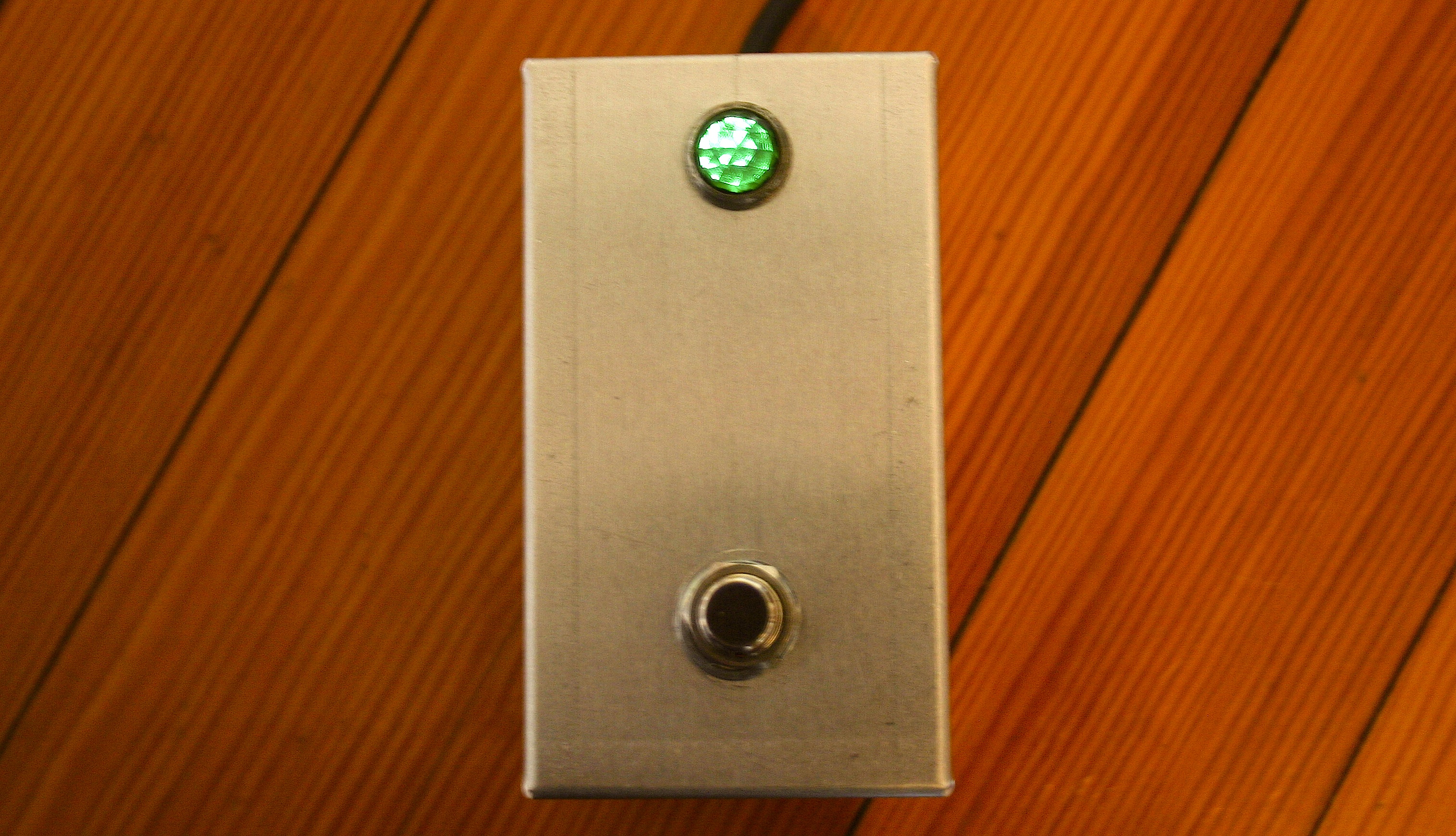 A detachable footswitch with a handy status-indicator jewel lamp completes this package.
A detachable footswitch with a handy status-indicator jewel lamp completes this package.
Winter 2013 Mixtape
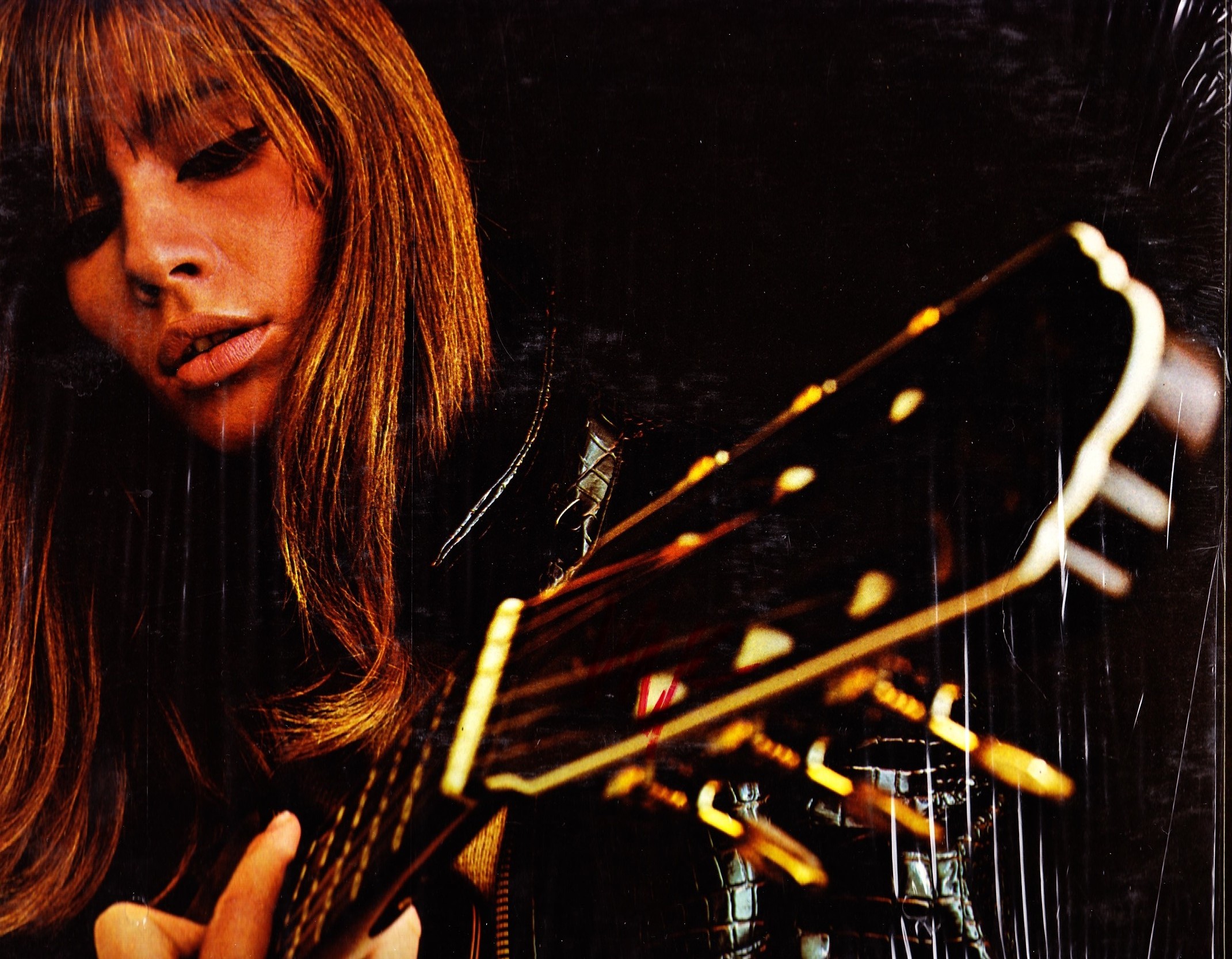
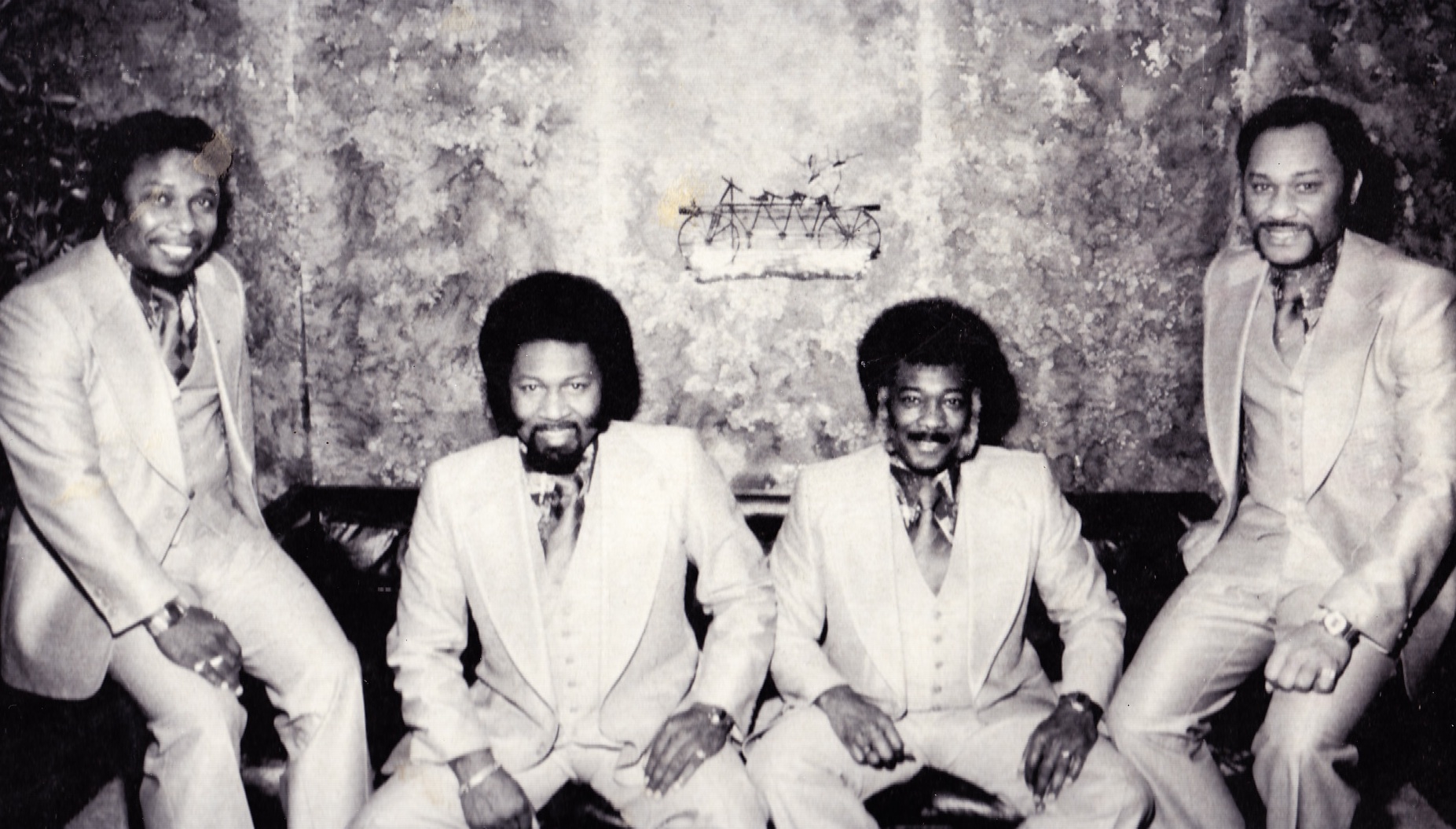 Alright alright. It is time. Time for a new year new year month week new day new pile of records to search thru looking for that new way to combine gtr+bs+drms into some kinda pattern we nvr heard before new way to say i love u i hate u why r we here where did the time go time to make a new mixtape. Had a few real good spells of crate digging last fall and here r the results. All fresh recordings off of LP into pro tools via my Benz Micro Gold cartridge. If you see me, ask me for a CD copy. If not… links are provided for most of the tracks. When I finish these mixtapes, which are the results of hundreds of hours driving thousands of miles around the SW corner of this state, pawing thru hundreds of thousands of LPs at thrift stores yard sales estate sales flea markets ETC., i either feel like eh this is ok or damn this is alright. Feeling the later re: this particular iteration.
Alright alright. It is time. Time for a new year new year month week new day new pile of records to search thru looking for that new way to combine gtr+bs+drms into some kinda pattern we nvr heard before new way to say i love u i hate u why r we here where did the time go time to make a new mixtape. Had a few real good spells of crate digging last fall and here r the results. All fresh recordings off of LP into pro tools via my Benz Micro Gold cartridge. If you see me, ask me for a CD copy. If not… links are provided for most of the tracks. When I finish these mixtapes, which are the results of hundreds of hours driving thousands of miles around the SW corner of this state, pawing thru hundreds of thousands of LPs at thrift stores yard sales estate sales flea markets ETC., i either feel like eh this is ok or damn this is alright. Feeling the later re: this particular iteration.
tracklist
1. Francoise Hardy “Song Of Winter” from the LP alone, Warner/Reprise 6397
2. The Rivits “Look All You Like” from the LP ‘Multiplay,’ Antilles/Island 7072, 1980.
3. Lucio Battisti “Confusione” from the LP comp Il Meglio Di Lucio Battisti Vol. 1., Dischi Numero Uno ZNLN 33002.
4. John Baldry “It Ain’t Easy” version from the LP comp Hot Platters, Warner/Reprise 1971.
5. Judy Mayhan “Dream Goin By” from the LP Moments, ATCO SD 33-319, 1970
6. Mary McCaslin “Prarie In The Sky,” title track, Philo Records 1024, 1975.
7. Bonnie Koloc “Sunday Morning Movies” from the s/t LP, Ovation Records 1429, 1973.
8. Jeanne C. Riley “He Made A Woman Outta Me” from the LP The Generation Gap, Plantation Records PLP 11
9. Frummox “There You Go” from the LP Here to There, PROBE/ABC CPLP4511
10. Spirit “Cold Wind” from the LP Clear, CBS/ODE Z1Z 44016
11. The Pentangle “Sweet Child” from the LP Comp The Warner/Reprise 1969 Songbook, Warner 331.
12. Humble Pie “Cold Lady” from the LP comp Lost And Found, A+M SP 3513,, orig. from the LP Town and Country, 1969
13. Ellis “El Doomo” from the LP Riding On The Crest Of A Slump, Epic KE 31945, 1972.
14. Randy Newman “Last Night I Had A Dream” Non-LP solo version from the LP comp Hot Platters, Warner/Reprise 1971.
15. It’s A Beautiful Day “Galileo”/”Do You Remember The Sun” from the LP Marrying Maiden, Columbia CS 1058.
16. Sir Douglas Quintet +2 “Whole Lotta Piece of Mind” from the LP (Honkey Blues), SMASH/Mercury STS 67108
17. The Soul Stirrers “Jesus Is The One” from the LP Glory Bound Train, GME/Crumco 0102 circa 1978.
18. Billy Preston “That’s The Way God Planned It,” title track, Apple ST-3359, 1969.
19. Bo Carter “Cigaret Blues” from the LP Comp Blues Roots Mississippi, RBF 14. Originally recorded c. 1936.
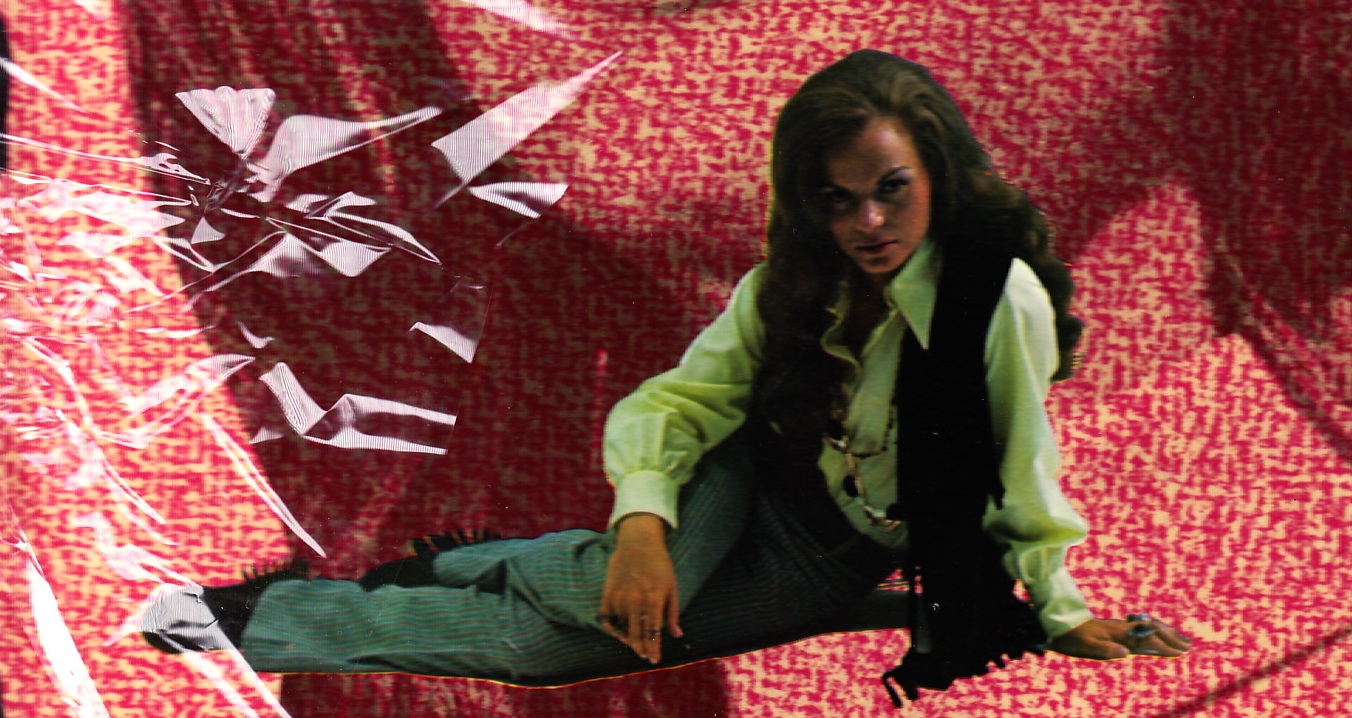
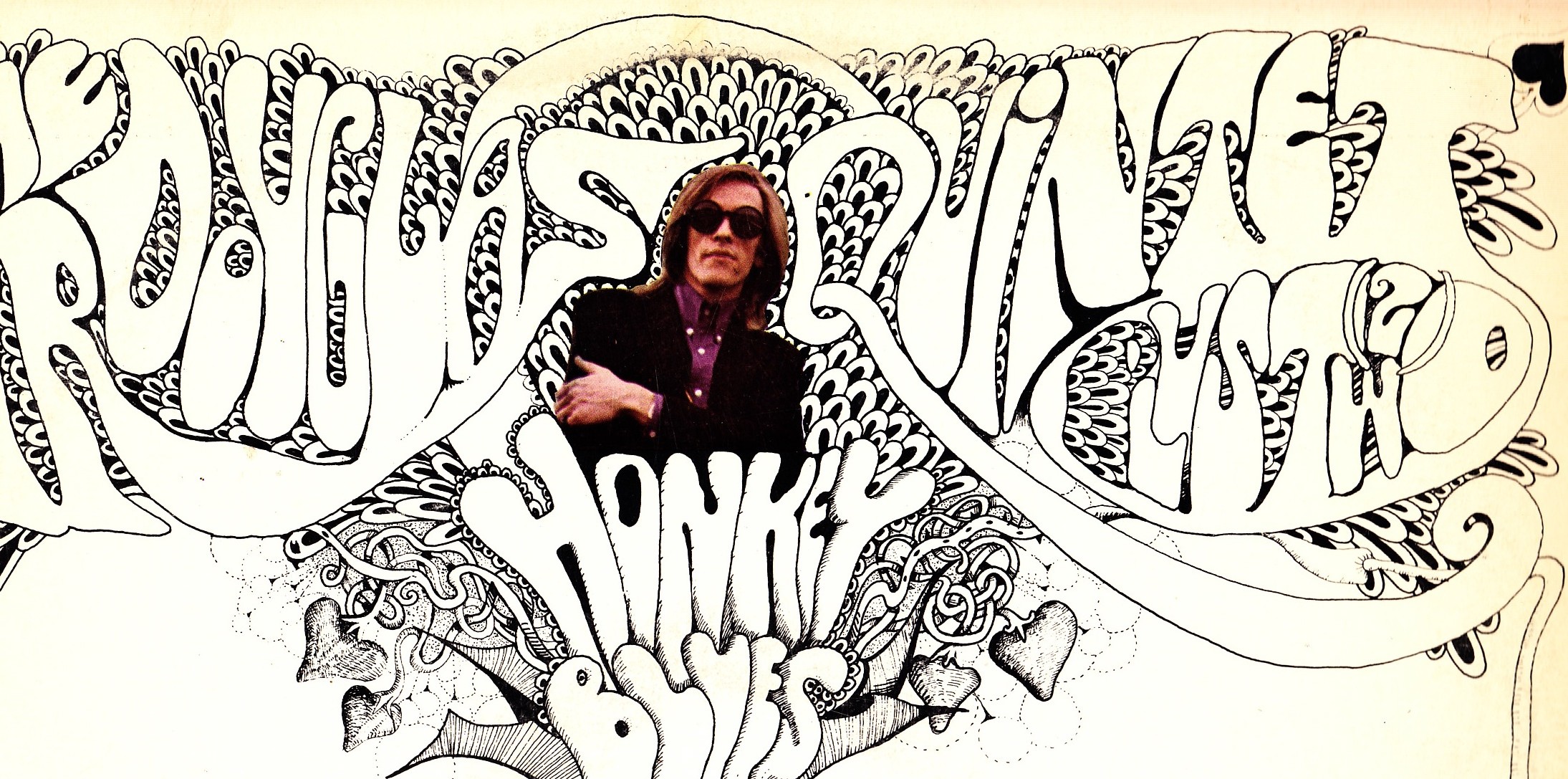 Follow the link below for track notes and more of the best album-artwork of all time.
Follow the link below for track notes and more of the best album-artwork of all time.
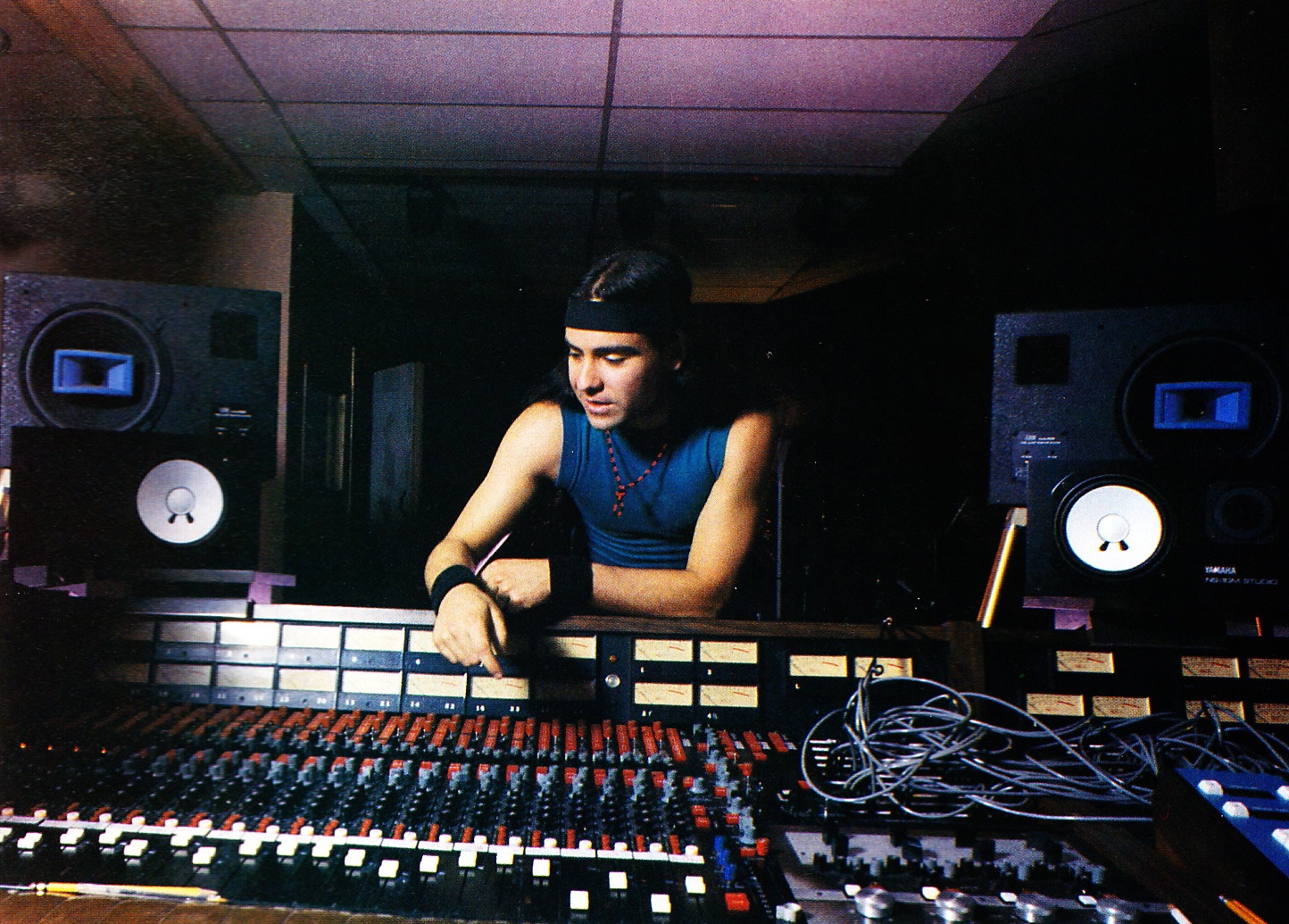 Download a three-page interview with producer Martin Bisi from HOME AND STUDIO RECORDING, 10/88. Interview is by Deborah Parisi, photos by L.G Carilles.
Download a three-page interview with producer Martin Bisi from HOME AND STUDIO RECORDING, 10/88. Interview is by Deborah Parisi, photos by L.G Carilles.
DOWNLOAD: MartinBisi_88_int
Bisi has the interview available as text on his website, but when I stumbled across the original print version in a giant pile of old guitar magazines I bought, it seemed somehow more poignant to read it in the original late-80s dressing.
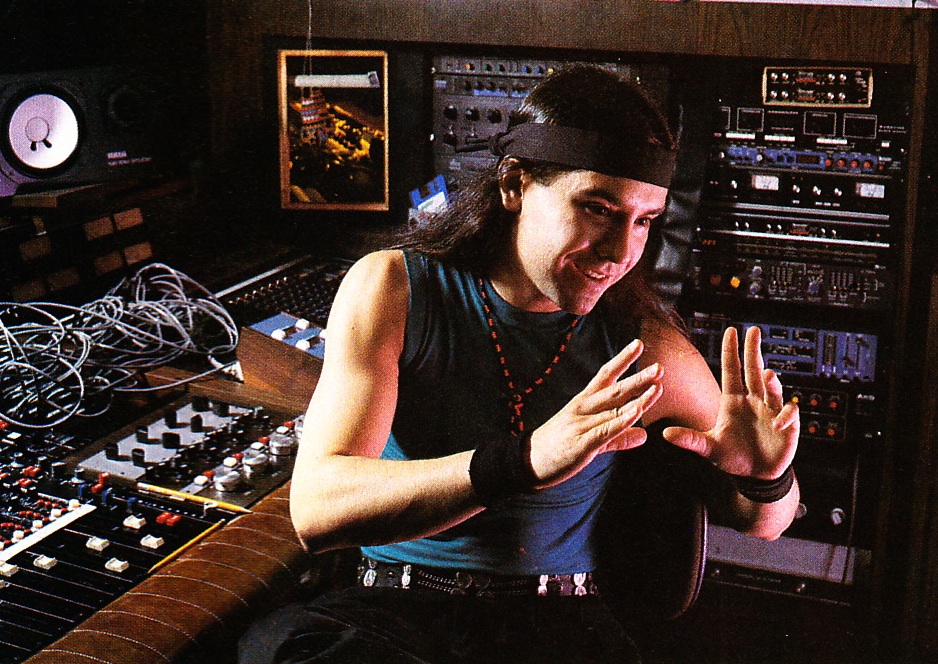 In the year prior to beginning work on my studio Gold Coast Recorders, I sublet B.C. Studio from Martin; my writing partner GJ and I shared the space with Jason Lafarge. I didn’t get a hell of a lot done there; one album that failed to attract much attention and a few pieces of TV commercial music; but I did have the opportunity to have many enlightening conversations with Martin. I can’t say that I have ever met a recording engineer/producer who had such an unclouded understanding of relationship between musical performance, records, and the technology that intervenes between those two things. At the risk of sounding a little too gushy, I will say that Martin is both truly an artist and also completely unpretentious; that’s a tough line to walk. Martin’s got an incredible list of credits and a ton of insights to offer. I did a recorded interview with Martin a couple of years ago, and god (or intern) willing, I hope to get it online at some point. BTW, the Parisi interview fails to convey the incredible size and strangeness of BC studio; the live room is a circa 1860 stone chamber approx. 3000 sq feet in size with 40 foot ceilings. Final note: all of the equipment that you see in those 1988 photos was still in exactly the same place, and still in service, when I was last there in 2009. How’s that for preservation.
In the year prior to beginning work on my studio Gold Coast Recorders, I sublet B.C. Studio from Martin; my writing partner GJ and I shared the space with Jason Lafarge. I didn’t get a hell of a lot done there; one album that failed to attract much attention and a few pieces of TV commercial music; but I did have the opportunity to have many enlightening conversations with Martin. I can’t say that I have ever met a recording engineer/producer who had such an unclouded understanding of relationship between musical performance, records, and the technology that intervenes between those two things. At the risk of sounding a little too gushy, I will say that Martin is both truly an artist and also completely unpretentious; that’s a tough line to walk. Martin’s got an incredible list of credits and a ton of insights to offer. I did a recorded interview with Martin a couple of years ago, and god (or intern) willing, I hope to get it online at some point. BTW, the Parisi interview fails to convey the incredible size and strangeness of BC studio; the live room is a circa 1860 stone chamber approx. 3000 sq feet in size with 40 foot ceilings. Final note: all of the equipment that you see in those 1988 photos was still in exactly the same place, and still in service, when I was last there in 2009. How’s that for preservation.
1949: Build your own Disc-Recorder!
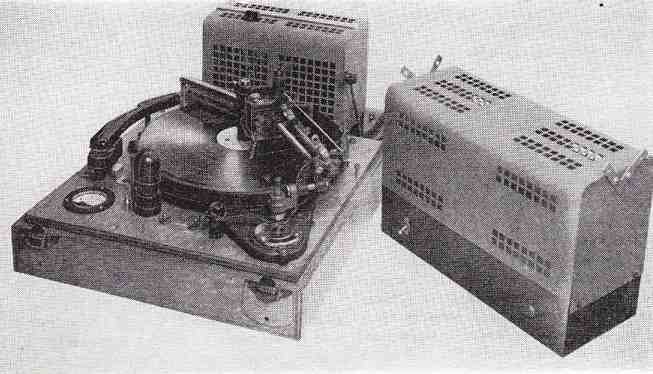 Download a four-page article from RADIO-ELECTRONICS, 4/1949, on the subject of ‘build your own disc recorder’:
Download a four-page article from RADIO-ELECTRONICS, 4/1949, on the subject of ‘build your own disc recorder’:
DOWNLOAD: DIY_DiscRecorder1949
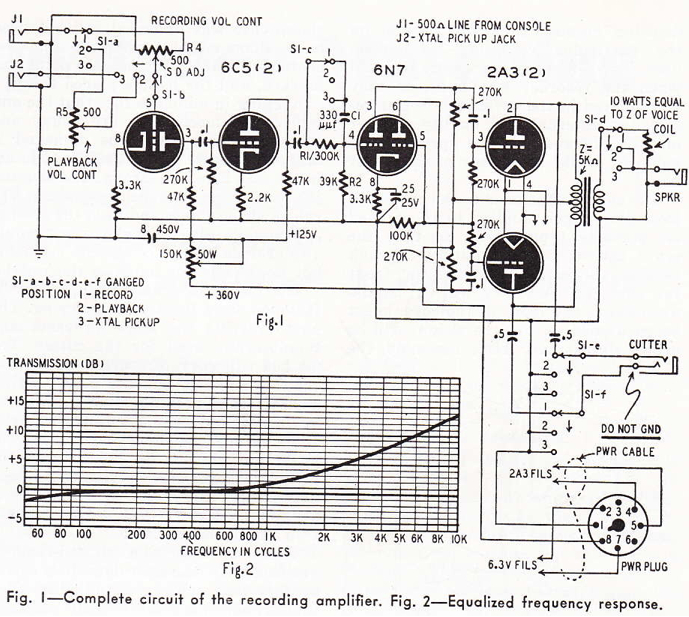 Above: the schematic. I can’t say that I have ever hand-built an audio unit that also required dynamic mechanical components, IE., moving parts. Seems rather ambitious. In 1949 the tape recorder was already becoming part of American media production, if not daily consumer life. Disc recorders were soon to become a thing of the past.
Above: the schematic. I can’t say that I have ever hand-built an audio unit that also required dynamic mechanical components, IE., moving parts. Seems rather ambitious. In 1949 the tape recorder was already becoming part of American media production, if not daily consumer life. Disc recorders were soon to become a thing of the past.
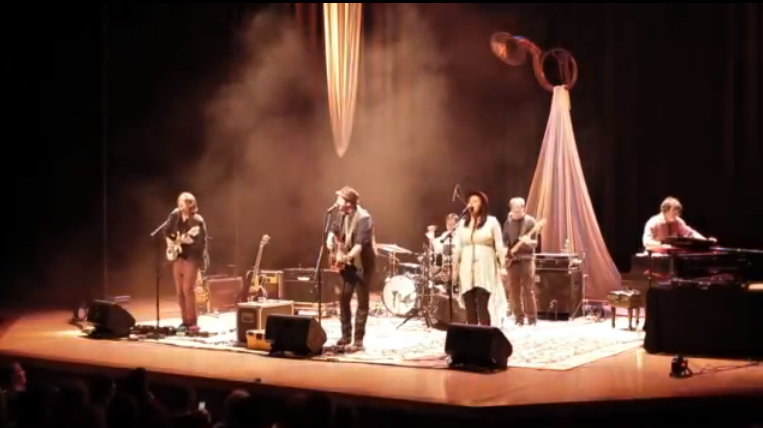 How y’all doing… srry that the fresh content has been slow to come lately; I’ve been blessed with a full plate, production-wise, lately, so there has been little time for writing. Expect some interesting new posts + project-build-notes in early January. In the meanwhile, I wanted to take a moment to share the results of a really rewarding project that I was part of recently. The Alternate Routes have been spending some time with me at GCR lately, and while none of that material has been released yet, I did a live multi-track and mix for them at The Quick Center in Fairfield CT on October 19th and they have made a few of those tracks available on YouTube with some great-looking multicam video footage by Mike Falzone. The band hired me that night to capture a Protools session with every input iso’d, which is easy enough… the wrinkle was that they wanted to be able to sell a recording of the set at the event itself. In the lobby. As the audience was leaving the venue. So using my Mackie ONYX 1640 mixer/firewire interface and a handful of outboard gear I did a live mix and a multitrack, both to Protools, and then quickly ‘mastered’ the stereo mixes during the encore; The Alternate Routes-logo’d USB drives were then quickly made and shuffled out of my little production suite backstage and out to the merch table. It’s basically the equivalent of doing a live TV mix, but with the additional task of getting the isos. Ten years ago I think this would have required a Remote Truck, but god bless technology (yup i said it), I was able to do this, properly, with inexpensive gear that fit in one load of my GMC Sierra. The band was pleased with the results of the live mix, and so what yr hearing here is just how my fingers moved the faders while the band played. Here’s “Oh My My,” which opened the concert.
How y’all doing… srry that the fresh content has been slow to come lately; I’ve been blessed with a full plate, production-wise, lately, so there has been little time for writing. Expect some interesting new posts + project-build-notes in early January. In the meanwhile, I wanted to take a moment to share the results of a really rewarding project that I was part of recently. The Alternate Routes have been spending some time with me at GCR lately, and while none of that material has been released yet, I did a live multi-track and mix for them at The Quick Center in Fairfield CT on October 19th and they have made a few of those tracks available on YouTube with some great-looking multicam video footage by Mike Falzone. The band hired me that night to capture a Protools session with every input iso’d, which is easy enough… the wrinkle was that they wanted to be able to sell a recording of the set at the event itself. In the lobby. As the audience was leaving the venue. So using my Mackie ONYX 1640 mixer/firewire interface and a handful of outboard gear I did a live mix and a multitrack, both to Protools, and then quickly ‘mastered’ the stereo mixes during the encore; The Alternate Routes-logo’d USB drives were then quickly made and shuffled out of my little production suite backstage and out to the merch table. It’s basically the equivalent of doing a live TV mix, but with the additional task of getting the isos. Ten years ago I think this would have required a Remote Truck, but god bless technology (yup i said it), I was able to do this, properly, with inexpensive gear that fit in one load of my GMC Sierra. The band was pleased with the results of the live mix, and so what yr hearing here is just how my fingers moved the faders while the band played. Here’s “Oh My My,” which opened the concert.
Those of you who follow my Tumblr may recall that I posted a snapshot of my lil’ setup during the event:
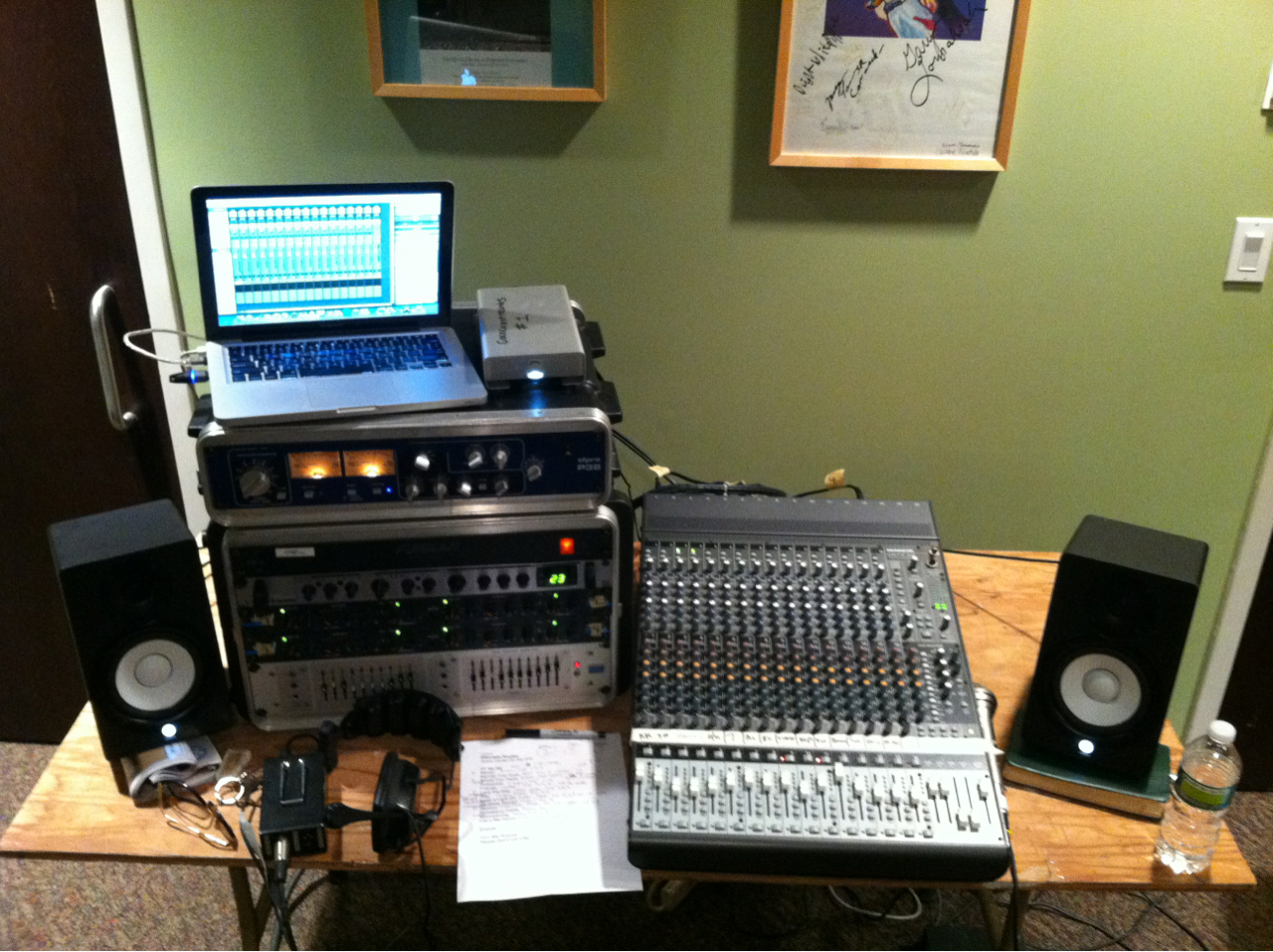 Pretty minimal tools; 6 channels of comps and a TC FX unit; this is actually just the outboard rack for my PA-Hire system. The Mackie was fed via a Whirlwind transformer split (thanks K!) by my usual live-sound-kit mics; basically Shure Betas with a pair of SM81s in the audience and a few special additions. On a more ‘Preservation Sound’ note, if you pay attention to Eric’s guitar sound: this actually proved to be the most difficult part of the equation to get right, and it required dipping deep into my mic cabinet for a vintage Sennheiser MD409. Nothing else that I tried on Eric’s Badcat Amp seemed to do the trick. The 409 is unfortunately extraordinarily expensive these days due its close association with both Pink Floyd and Stevie Ray Vaughan. If you have the chance to pick one up for a reasonable price, I would highly recommend you try it out. It really is a pretty special dynamic mic; certainly not for everything, but it does have a unique quality to it.
Pretty minimal tools; 6 channels of comps and a TC FX unit; this is actually just the outboard rack for my PA-Hire system. The Mackie was fed via a Whirlwind transformer split (thanks K!) by my usual live-sound-kit mics; basically Shure Betas with a pair of SM81s in the audience and a few special additions. On a more ‘Preservation Sound’ note, if you pay attention to Eric’s guitar sound: this actually proved to be the most difficult part of the equation to get right, and it required dipping deep into my mic cabinet for a vintage Sennheiser MD409. Nothing else that I tried on Eric’s Badcat Amp seemed to do the trick. The 409 is unfortunately extraordinarily expensive these days due its close association with both Pink Floyd and Stevie Ray Vaughan. If you have the chance to pick one up for a reasonable price, I would highly recommend you try it out. It really is a pretty special dynamic mic; certainly not for everything, but it does have a unique quality to it.
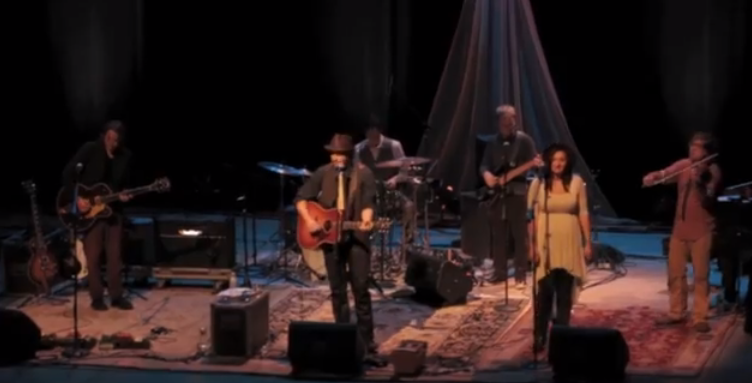 Getting back to the band: they have also posted a few other songs from the evening, including Moonshining and Stay. Check ’em out; they really are are a fine group.
Getting back to the band: they have also posted a few other songs from the evening, including Moonshining and Stay. Check ’em out; they really are are a fine group.
Demo! (first in a series)
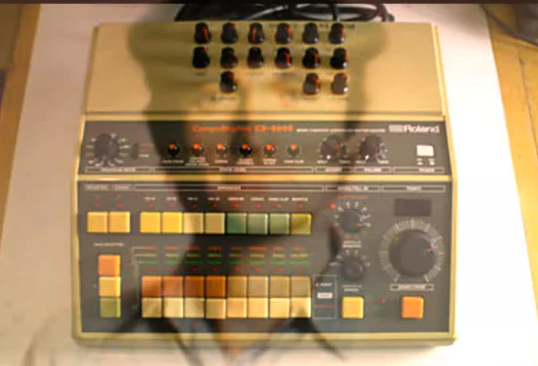 A Roland CR-8000, a piano, a shit-tonne of echo, and Phil Collins circa 1980. Sounds incredibly modern. Click here or watch below. I had a CR-8000 alongside my TR-606 for some years; I had it midi sync’d via my MSQ-700. I still have the MSQ and the TR, but the CR-8000 was transmuted into ‘RENT’ sometime around 2001. Miss it. I paid $25 for it at ALTEL on Main Street in Bridgeport; they are tough to find for under $500 these days.
A Roland CR-8000, a piano, a shit-tonne of echo, and Phil Collins circa 1980. Sounds incredibly modern. Click here or watch below. I had a CR-8000 alongside my TR-606 for some years; I had it midi sync’d via my MSQ-700. I still have the MSQ and the TR, but the CR-8000 was transmuted into ‘RENT’ sometime around 2001. Miss it. I paid $25 for it at ALTEL on Main Street in Bridgeport; they are tough to find for under $500 these days.
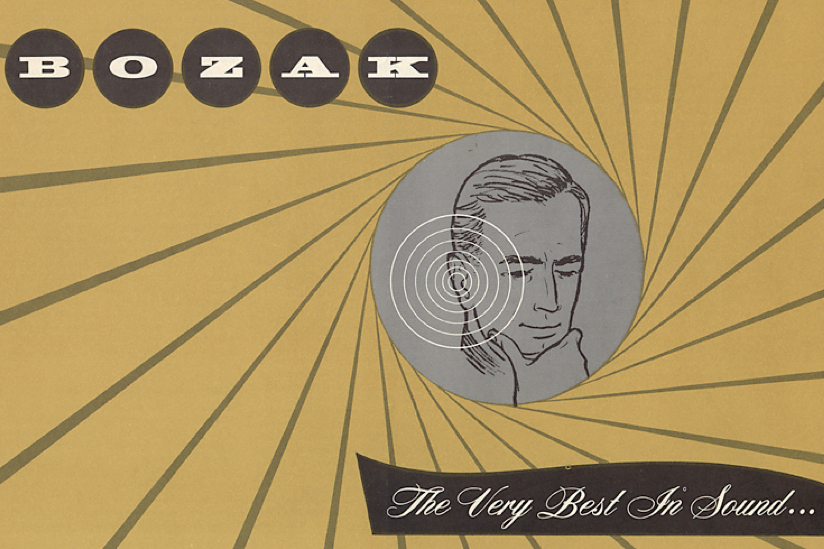 Courtesy of reader T.F., download the complete 1958 Bozak speaker catalog. BTW, I am trying the PNG graphics format for the first time, so if this post displays incorrectly please let me know in the comments section.
Courtesy of reader T.F., download the complete 1958 Bozak speaker catalog. BTW, I am trying the PNG graphics format for the first time, so if this post displays incorrectly please let me know in the comments section.
DOWNLOAD: 1958
Products covered include the Bozak B-400, B-300, B-305, B-310, and B-302 hi fi speaker systems, as well as the B-199A, B-209, B-200x, B-207A, and B-200xA drivers. Bozak N-10102, N-103, and N-104 crossovers are also described. Bozak apparently also offered all of their 1958 systems as baffle-only, intended for custom installation work…
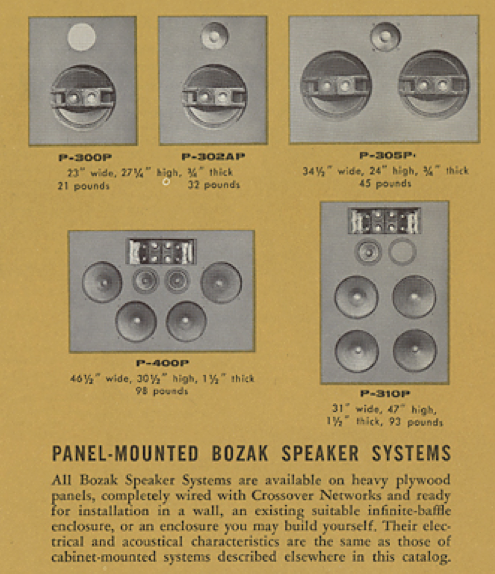 Bozak was a CT -based operation and we’re proud to have had ’em. Click this link for our scan of the 1970 Bozak catalog.
Bozak was a CT -based operation and we’re proud to have had ’em. Click this link for our scan of the 1970 Bozak catalog.
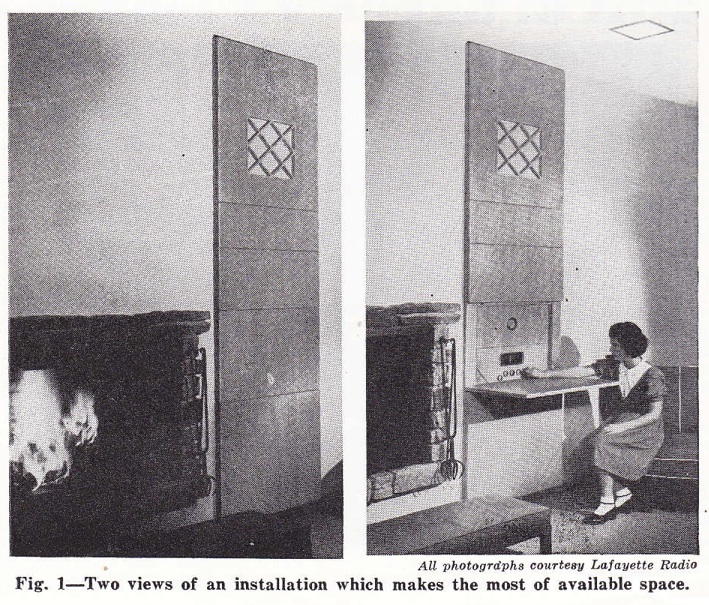 Since we’re on the subject of antique hi-fi installs… download a three-page article from RADIO-ELECTRONICS, April 1950, on the subject of the burgeoning custom-installation business for hifi equipment (via opportunities-await-you). Author is one William Rivkin.
Since we’re on the subject of antique hi-fi installs… download a three-page article from RADIO-ELECTRONICS, April 1950, on the subject of the burgeoning custom-installation business for hifi equipment (via opportunities-await-you). Author is one William Rivkin.
DOWNLOAD: CustomHiFi_1950
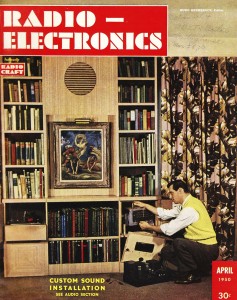 When I was a child my family moved into a circa 1930s home (renovated circa 1965) that had one of these custom installs. I can’t recall what brand of drivers were installed, but the amp was a Harmon-Kardon, stereo, with (I think…) 6BQ5s. The Ttable was likely a Garrard. I really think that the particular smell that the amp made was one the things that fascinated me the most about it; shortly thereafter I picked out my first guitar amp (thanks Mom+Dad), an excellent-sounding brand-new Fender Champ 12. I remember the gtr-store salesmen being completely shocked that a child wanted a tube amp, rather than something with Mega-Distortion and Chorus; perhaps I should have told him that I was attracted to the smell. The Harmon Kardon, I believe, I gave away to a high-school classmate named Matt Tebbe; Matt, if yr still out there, drop us a line and let us know if you stuck with the tube thing. I definitely have…
When I was a child my family moved into a circa 1930s home (renovated circa 1965) that had one of these custom installs. I can’t recall what brand of drivers were installed, but the amp was a Harmon-Kardon, stereo, with (I think…) 6BQ5s. The Ttable was likely a Garrard. I really think that the particular smell that the amp made was one the things that fascinated me the most about it; shortly thereafter I picked out my first guitar amp (thanks Mom+Dad), an excellent-sounding brand-new Fender Champ 12. I remember the gtr-store salesmen being completely shocked that a child wanted a tube amp, rather than something with Mega-Distortion and Chorus; perhaps I should have told him that I was attracted to the smell. The Harmon Kardon, I believe, I gave away to a high-school classmate named Matt Tebbe; Matt, if yr still out there, drop us a line and let us know if you stuck with the tube thing. I definitely have…
